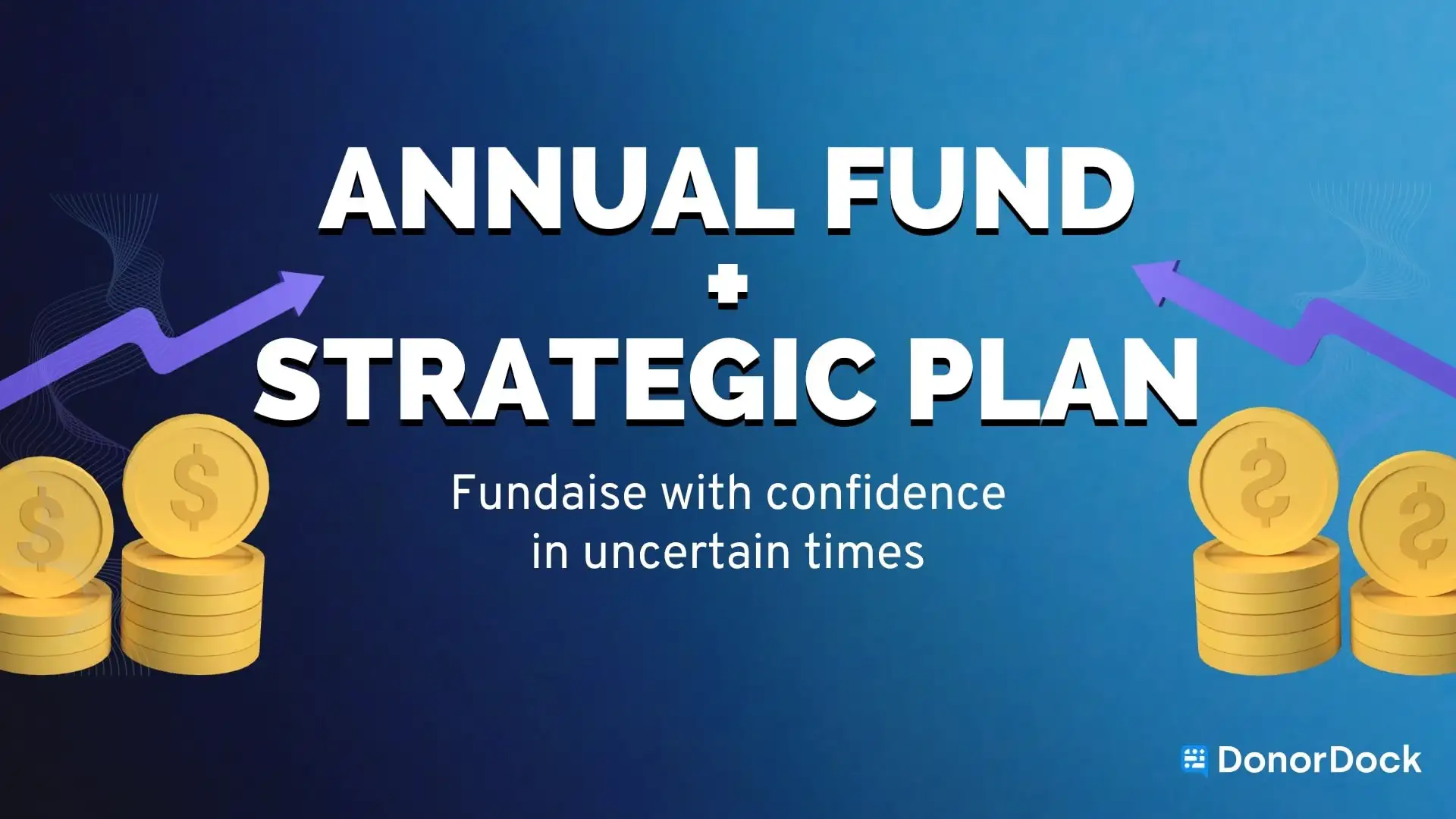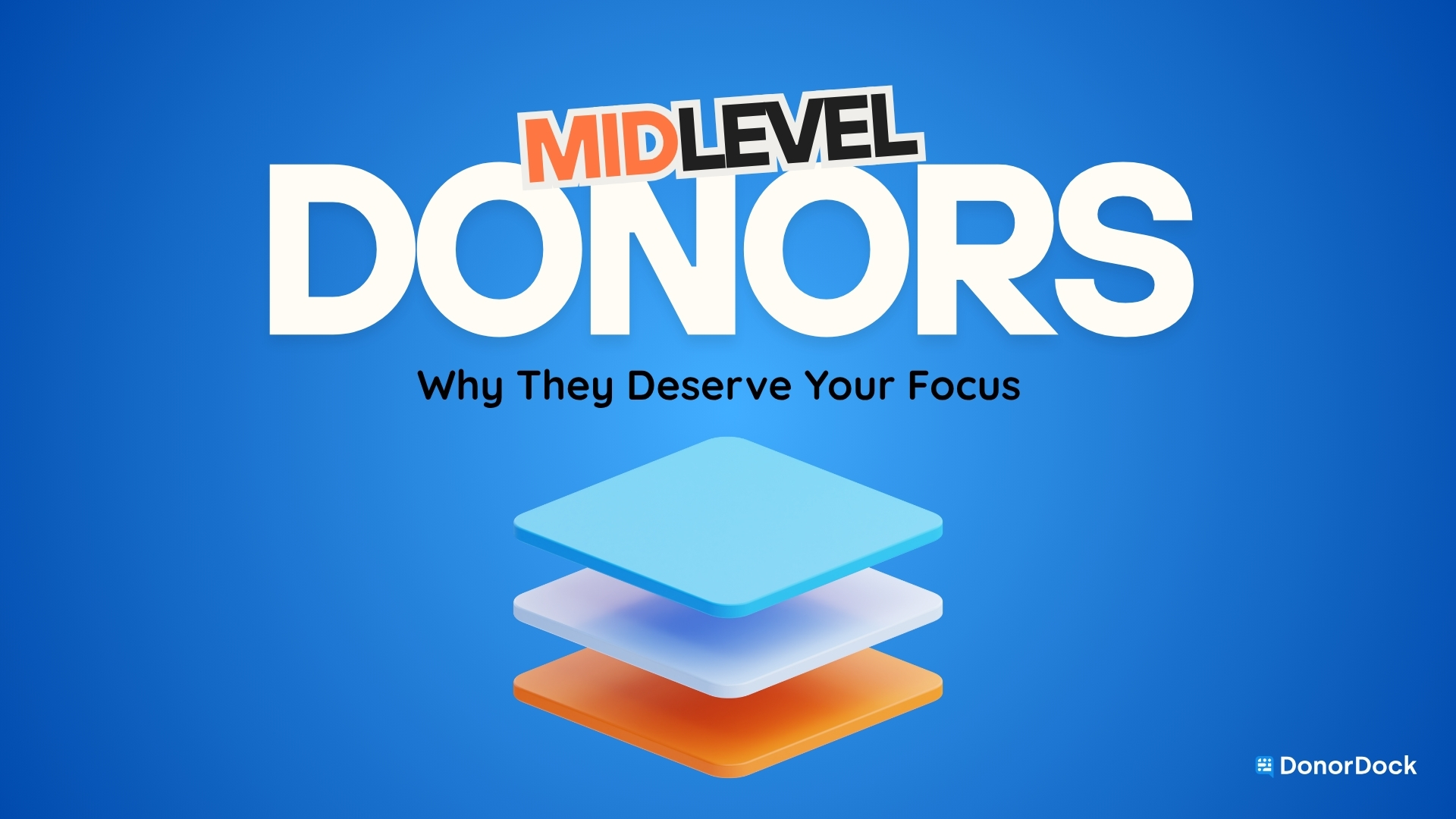Fundraising is often painted as heroic, late nights, endless events, and the thrill of hitting that big campaign goal. But let’s be honest: behind the highlight reel, many nonprofit professionals are running on fumes. Burnout doesn’t just affect you; it affects your donors, your team, and ultimately your mission.
If you want sustainable fundraising, you need to treat wellness like infrastructure, not an afterthought.
Why Wellness Isn’t Optional for Fundraisers
You’ve probably heard the phrase, “You can’t pour from an empty cup.” For fundraisers, this isn’t just a metaphor, it’s a risk assessment.
Think about it. If you or your team are constantly running on empty, donor stewardship suffers first. Instead of thoughtful thank-you calls, you’re rushing out a generic email. Instead of taking the time to share impact stories, you’re scrambling to prepare for the next event.
The ripple effects are real:
- Burnout costs nonprofits real money. The turnover rate for development staff is among the highest in the nonprofit sector, averaging just 18 months. Every time a fundraiser leaves, you’re not only losing relationships—they take institutional knowledge and donor trust with them. Replacing them can cost up to 200% of their salary (AFP Global).
- Exhaustion lowers donor engagement. When your team is overwhelmed, stewardship becomes reactive instead of proactive. That means fewer meaningful touchpoints with donors and more last-minute appeals that don’t land.
- Team stress weakens campaigns. A Stanford study found workplace stress costs U.S. organizations up to $190 billion in health expenses annually. Nonprofits, often operating with smaller teams and tighter budgets, feel this impact more acutely than anyone else.
The reality is clear: ignoring wellness isn’t just a personal risk, it’s an organizational risk.
Four Ways to Build Wellness Into Your Fundraising Rhythm
The good news? You don’t need a yoga retreat or a six-month sabbatical to shift your team culture. Small, intentional practices, repeated consistently, can transform the way your team works and how donors experience your organization.
1. Normalize “Soulful Minutes”
Imagine this: you kick off a team meeting, and instead of diving right into to-do lists, you pause. Everyone shares one word about how they’re feeling, “energized,” “frazzled,” “hopeful.” Some laugh, some sigh, but suddenly the air feels lighter. That’s the power of what Frances Roen calls “soulful minutes.”
These check-ins are more than fluffy feel-good exercises. They create space for authenticity. When people feel safe to say, “I’m tired” or “I’m excited,” it builds trust. That trust doesn’t just help your team, it spills over into donor relationships. Energized, supported fundraisers show up differently with donors.
Start small. Set aside five minutes in your next staff meeting for a check-in. Over time, it becomes a rhythm that prevents burnout before it starts.
2. Anchor Wellness in Leadership Support
Here’s the truth: wellness won’t stick if it’s just a grassroots effort. It has to be modeled from the top. If staff see their executive director answering emails at midnight, they’ll feel pressure to do the same. But if that same leader leaves loudly at 5 p.m. or encourages people to use their vacation days, it sends a powerful message: rest is allowed here.
In fundraising, leadership buy-in changes everything. Donors look for consistency and trust–two qualities that can only exist when your team is supported. As DonorDock’s Smart Steward Method reminds us, consistency builds trust. The same applies internally. When leaders consistently champion wellness, they’re not just protecting staff, they’re strengthening donor experiences.
Board members, too, play a role. When a board chair validates wellness as part of organizational success, it reframes rest as strategy, not weakness.
3. Create Boundaries That Protect Donor Time
Here’s a paradox: setting boundaries actually makes you more donor-centered. When your calendar is full of back-to-back meetings and “urgent” requests, donor calls inevitably fall to the bottom of the list.
setting boundaries actually makes you more donor-centered.
Boundaries give breathing room back to the mission. That might look like:
- Blocking “donor hours” each week, when the only task is connecting with donors, whether that’s calls, notes, or coffee meetings.
- Using automation tools like Otto to take repetitive tasks off your plate, so you have energy left for human connection.
- Creating a policy that after-hours email is for emergencies only, protecting personal time while ensuring focus during working hours.
Boundaries aren’t walls; they’re guideposts. They ensure that the work that matters most, building relationships, doesn’t get buried under busywork.
4. Celebrate Progress, Not Just Results
Fundraisers often live in a world of big goals: campaign targets, major gift asks, or annual revenue milestones. While those goals are important, they can make the day-to-day wins feel invisible. And when the only time you celebrate is after a million-dollar campaign, your team will feel like they’re constantly chasing a finish line that keeps moving.
Celebrating small wins recharges morale and reminds your team that their daily efforts matter. Did you complete all donor thank-you calls this week? Celebrate. Did you re-engage three lapsed donors? That’s a win. Did everyone make it through the week without feeling totally overwhelmed? That’s worth naming.
Progress fuels momentum. Pair these celebrations with intentional donor journey milestones, like the 6 donor journeys every nonprofit should use. Mapping out smaller, relational steps alongside financial goals gives your team—and your donors—a clear picture of growth that feels achievable and meaningful.
Wellness as a Donor Strategy
Here’s the secret that often gets overlooked: wellness isn’t just about your staff, it’s about your donors, too.
Donors can sense when you’re stretched thin. They feel it in rushed conversations, in emails that sound generic, and in appeals that lack heart. But they can also sense when you’re energized, authentic, and present. When your team is thriving, donors are more likely to feel seen and valued.
That’s why wellness is more than self-care. It’s a donor strategy. A thriving team creates a thriving donor community. Every thank-you note carries more warmth, every event feels more joyful, and every stewardship touchpoint reinforces loyalty.
“Burnout isn’t a personal failure, it’s a program risk. Treat team wellness as campaign infrastructure.”
Where to Start
If wellness feels like one more thing to add to your endless to-do list, take a deep breath. Start small.
- Add a five-minute ritual to your next meeting.
- Block one uninterrupted hour for donor conversations.
- Choose one visible way to shift policy, like celebrating staff who actually use their vacation days.
Wellness isn’t about perfection; it’s about progress. Just like donor relationships, it grows stronger with steady, intentional effort. Over time, these practices create exponential returns: healthier teams, stronger donor relationships, and more resilient fundraising.
Conclusion
Fundraising is about relationships, and relationships thrive when people do. When you fill your cup, you’re not just protecting yourself, you’re fueling your mission for the long haul.
So here’s your permission slip: take care of yourself, take care of your team, and watch how it transforms your donor relationships.
Explore more strategies on donor retention and start building meaningful donor relationships today.













